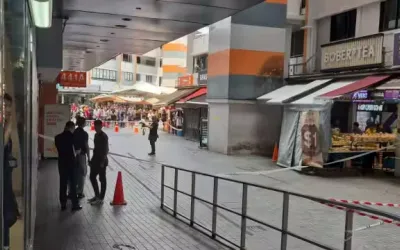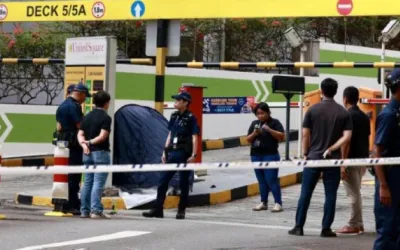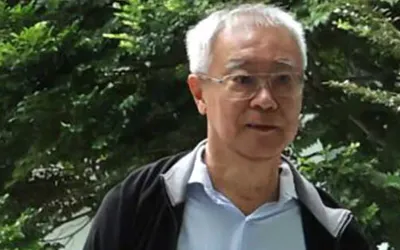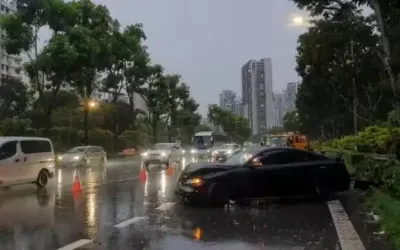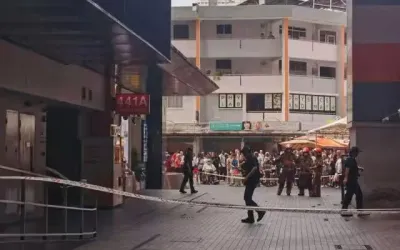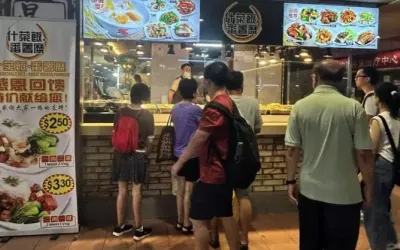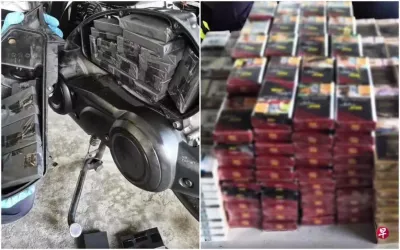2024年7月2日,新加坡交通部長徐芳達在國會書面答覆楊厝港單選區議員葉漢榮、丹戎巴葛集選區議員祖安清心以及碧山—大巴窯集選區議員安迪有關新加坡港是否有足夠能力預測和管理嚴重的貨運擁堵問題。
以下內容為新加坡眼根據國會英文資料翻譯整理:
葉漢榮(楊厝港單選區議員)先生詢問交通部長:
(a) 新加坡海港是否有足夠的能力預測和管理全球混亂造成的嚴重貨物擁堵?
(b) 是否會推遲關閉其他港口,直到大士港全面投入運營?
(c) 交通部能否詳細說明解決我國海港貨物擁堵的規程和預計持續時間?
徐芳達(交通部長)先生:我的答覆還將涉及今天會議的第69號書面問題以及祖安清心(丹戎巴葛集選區議員)女士 和安迪(碧山—大巴窯集選區議員)先生提交的後續會議的相關問題。
紅海危機導致來往於歐洲和亞洲之間的船隻改道繞行好望角的更長航線。因此,世界各地的港口都出現了不按計劃抵達的情況。在我國港口,約有90% 的貨櫃船未按計劃抵達,而 2023 年的平均水平約為 77%。許多船隻也在很短的時間內抵達,造成了 「船舶扎堆 」效應,使問題更加複雜。
為了讓船隻更快地返回歐洲,貨櫃航運公司依靠新加坡作為轉運港,將運往新加坡以外亞洲港口的貨物卸載後再掉頭。貨櫃航運公司還利用新加坡重新安排船上的貨櫃,以最大限度地增加貨櫃數量,方便下游港口的作業。因此,我國港口對貨櫃處理的要求和複雜程度都有所提高。
這些都延長了貨櫃船在我們港口進行貨運作業的時間,進而增加了進港船隻的等候時間,導致我們貨櫃泊位擁堵。
交通部 (MOT)、新加坡海事及港務管理局 (MPA) 和 新加坡港務集團(PSA)正在與我們的三方合作夥伴密切合作,以解決擁堵問題。我們已重新啟用吉寶和丹戎巴葛碼頭的部分泊位和堆場空間。自今年年初以來,新加坡港務集團(PSA)已提升了其碼頭的處理能力,並將在未來幾個月繼續擴大規模以滿足預期需求。
根據新加坡的港口能力發展計劃,今年還將在大士港投入三個新泊位。第一個泊位昨天(7月1日)剛剛開始運營,另外兩個泊位分別於10月和12月開始投入運營。如果需求持續增長,新加坡港務集團(PSA)還將加快並提前開發更多能力。
巴西班讓碼頭將至少運營到 2040 年,以支持向大士港的過渡,大士港將在 2040 年全面竣工,屆時將擁有 6,500 萬個二十英尺標準箱(TEU)的吞吐能力。這將確保我們的港口貨櫃處理能力不會下降,反而會隨著大士港的逐步發展而繼續增長。隨著新加坡港務集團(PSA)貨櫃處理能力的提高,交通部和海事及港務管理局(MPA)正在為港務集團(PSA)提供支持,以確保其擴大運營後有足夠的工人。
新加坡交通部(MOT)、海事及港務管理局(MPA)和新加坡港務集團(PSA)正與我們的三方合作夥伴密切合作,以解決擁堵問題。我們已重新啟用吉寶碼頭和丹戎巴葛碼頭的部分泊位和堆場。自今年年初以來,和新加坡港務集團(PSA)已提高了各碼頭的裝卸能力,並將在未來幾個月繼續擴大裝卸能力,以滿足預期需求。
海事及港務管理局(MPA)和新加坡港務集團(PSA)還與所有主要貨櫃班輪公司進行討論,利用海事及港務管理局(MPA)的即時系統優化船舶到達時間和運營並改善船舶周轉。對於未按計劃到達並等待泊位準備就緒的船舶,貨櫃班輪公司將利用等待時間在錨地提供加油和船舶補給等服務。
貨櫃吞吐量的強勁增長和對我們港口轉運貨櫃的依賴反映了全球航運業對新加坡作為值得信賴的樞紐港的信心。今年1月至5月,我們港口的貨櫃吞吐量增長了 7.7%,達到 1690 萬標準箱,高於 2023 年同期的 1570 萬標準箱。
雖然我們的努力改善了本月的平均等待時間,但紅海危機不太可能很快緩解。隨著公司將出口計劃提前到亞洲以外,並為下半年的主要假期做準備,貨櫃數量的增加也可能會加劇這種情況。
新加坡交通部(MOT)、海事及港務管理局(MPA)將繼續與港務集團(PSA)、我們的工會和貨櫃航運公司密切合作,以應對這種情況,以便新加坡港能夠處理額外的需求,並保持我們眾所周知的卓越、可靠和高效的服務。

以下是英文質詢內容:
Mr Yip Hon Weng asked the Minister for Transport (a) whether Singapore’s seaports are adequately equipped to anticipate and manage severe cargo congestion arising from global disruptions; (b) whether the closure of other ports will be delayed until the Tuas Mega Port is fully operational; and (c) whether the Ministry can elaborate on the protocols and projected duration for resolving cargo congestion in our seaports.
Mr Chee Hong Tat: My reply will also address Written Question No 69 for today’s Sitting and related questions from Ms Joan Pereira1 and Mr Saktiandi Supaat that have been filed for a subsequent Sitting.
The Red Sea crisis has led to vessels being diverted to the longer route around the Cape of Good Hope for sailings between Europe and Asia. As a result, ports around the world are experiencing more off-schedule arrivals. In our port, about 90% of container vessels are arriving off-schedule, compared to an average of about 77% for 2023. Many of the vessels are also arriving within a short window, compounding the issue by causing a 「vessel bunching」 effect.
To allow vessels to return to Europe more quickly, container shipping lines are relying on Singapore as a transshipment port to unload cargoes bound for Asian ports beyond Singapore before turning around. Container lines are also using Singapore to rearrange their containers on the vessels, to maximise the number of containers carried and facilitate operations at downstream ports. As a result, both the demands and complexity of container handling at our port have increased.
These have lengthened the time container vessels stay in our port for cargo operations, which, in turn, increased the waiting time for incoming vessels, leading to congestion at our container berths.
The Ministry of Transport (MOT), Maritime and Port Authority of Singapore (MPA) and PSA are working closely together with our Tripartite Partners to address the congestion. We have reactivated some of the berths and yard space at Keppel and Tanjong Pagar Terminals. Since the start of the year, PSA has ramped up its handling capacity across its terminals and will continue to scale up in the months ahead to meet anticipated demand.
In line with Singapore’s port capacity development plan, three new berths will also be operationalised at Tuas this year. The first of these commenced operations just yesterday, with two more berths starting operations in October and December respectively. If the increase in demand is sustained, PSA will also expedite and bring forward the development of additional capacity.
Pasir Panjang Terminal will remain in operation until at least 2040, to support the transition to Tuas Port which will have a capacity of 65 million twenty-foot equivalent units (TEUs) when it is fully completed in the 2040s. This will ensure that our port container handling capacity does not decrease and will instead continue to grow when Tuas Port progressively develops. As PSA increases its container handling capacity, MOT and MPA are supporting PSA to ensure that there are sufficient workers for its expanded operations.
MPA and PSA are also in discussions with all the major container lines, using MPA’s Just-In-Time system, to optimise vessel arrival times and operations and improve vessel turnaround. For vessels that arrived off-schedule and are waiting for berths to be ready, the container liners will use the waiting time to conduct services, such as bunkering and ship resupply, at the anchorages.
The strong growth in container throughput and the reliance on our port to turn around transshipment containers reflect the global shipping industry’s confidence in Singapore as a trusted hub port. Container throughput at our port between January and May this year has increased by 7.7% to 16.9 million TEUs, up from 15.7 million TEUs in the same period in 2023.




